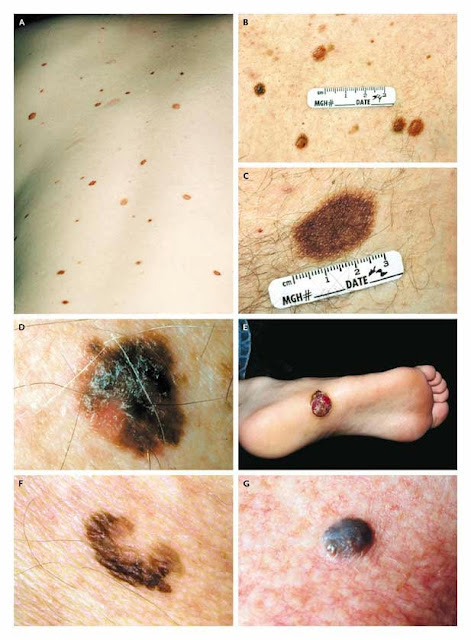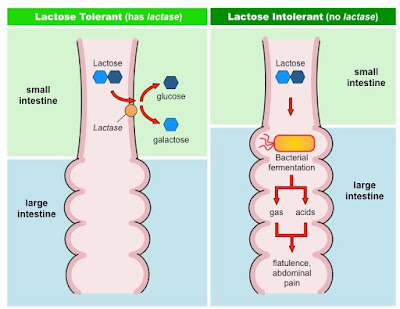✤✤✤✤✤✤✤✤✤✤✤✤✤✤✤✤✤✤✤✤✤✤✤✤✤✤✤✤✤✤✤✤✤✤✤✤✤✤✤✤✤✤✤✤✤✤✤✤✤✤✤
***RECAP***
Melanoma is a form of cancer that begins in the melanocytes. The most well-known form of melanoma is cutaneous melanoma, otherwise known as skin cancer. Cancer is a general term for a variety of different genetic diseases. There are different types of cancer, such as breast cancer, lung cancer, leukemia, etc. There are a variety of risk factors, depending on the type of cancer a patient has, that can be associated with cancer, such as it being genetic, having continuous UV exposure, smoking, abnormal cell growth, and many more.
✤✤✤✤✤✤✤✤✤✤✤✤✤✤✤✤✤✤✤✤✤✤✤✤✤✤✤✤✤✤✤✤✤✤✤✤✤✤✤✤✤✤✤✤✤✤✤✤✤✤✤
Treatments for cancer used in modern medicine (1):
 |
| https://www.impactguru.com/blog/getting-cancer-treatment-in-india |
✤ Surgery: The physical removal of the tumor if it has not metastasized too deep into other parts of the body.
✤ Radiation Therapy (2): In radiation therapy, the radiation is used to kill the cancer cells or shrink tumors in a localized area. It is able to do this because the radiation damages the DNA so that the cancer cell can no longer grow and will ultimately die. Radiation therapy can be used along with surgery if a tumor is too large to remove. The radiation therapy can be used to shrink the tumor so that the tumor is smaller and easier to remove with surgery. There are two forms of radiation therapy: external beam radiation therapy and internal radiation therapy.
External beam radiation therapy is when a machine "beams" the radiation onto a specific part
of the body that has cancer.
Internal radiation therapy is when the radiation is in the form of a liquid or solid that is placed
inside the cancer patient generally near the tumor site.
Despite the type of radiation therapy the patient undergoes, the therapy can last for several days or weeks. Based on the previous post about melanoma, how does one not get melanoma with the amount of radiation being used on the patient? Your body can tolerate a certain amount of radiation which is why every time you go outside you do not develop melanoma. There is a safe amount of radiation that can enter an individual's body, but once the maximum safe amount of radiation has been reached, that part of the body can no longer undergo radiation therapy.
✤ Chemotherapy (3): This mode of treatment is probably the most common when individuals think of cancer. Chemotherapy uses drugs to slow down the rate of rapidly growing cancer cells. Not only can this treatment potentially cure and decrease the chances of cancer from returning, but it can also be used to help shrink the tumor and lessen the pain and other symptoms that a cancer patient might experience. Some side effects associated with chemotherapy include damage to the growth of healthy cells (which is why patients on chemotherapy might experience hair loss) and extreme fatigue.
✤ Immunotherapy (4): This form of treatment targets the immune system so that it is better equipped to fight off cancer but is still not as commonly used as surgery, radiation therapy, or chemotherapy. There are several types of immune therapies such as:
Checkpoint inhibitors are drugs that help the immune system respond to tumors without
directly targeting them. Instead, they target the cancer cells ability to not be affected by the
immune system's attack.
 |
| https://www.cancer.gov/publications/dictionaries/cancer-terms/def/immune-checkpoint-inhibitor |
T cell and tumor cell.
Adoptive cell transfer is a type of immunotherapy that also helps the immune system to fight
off cancer cells. For this therapy, t-cells are extracted from the cancer cell itself. Out of all the t-
cells removed, the most active ones against cancer will be brought to the laboratory to greatly
multiply them so that when they are returned to the patient, there will be t-cells that are
specialized to help fight off the cancer from which they were extracted from.
There are other forms of treatments besides the ones I have listed above and there are a lot of scientists working to find new and better modes of treatments for cancer patients.
So how does one decide which treatment would be best for his or her cancer? The best way to find out which type of treatment would better your chances of fighting off cancer, is to discuss it with your doctor. Your doctor will take into consideration which cancer the patient has, what stage is the cancer at, and if the patient has had cancer previously and with what treatments.
Take a look at the two images below and compare:
 |
| https://www.slideshare.net/ronaldoquitco/defeating-colorectal-cancer-7315501 |
 |
| https://www.scienceofcrc.org/treat/ |
From the images, you can see that there is a slight variation in the "start" of certain treatments, such as chemotherapy and radiation. In the first image, chemotherapy does not begin until Stage 3, while in the second image chemotherapy can begin in Stage 2. There is not an exact or "correct" stage to begin certain treatments because cancer is very complicated. Overall you can tell that surgery is a treatment option from Stage 0 to Stage IV, even though it is more commonly used in the early stages of cancer when the tumors are easier to detect and remove without damaging too much of the surrounding tissues. Although there are risks with cancer treatments and this all may seem intimidating, talking to your doctor will make it easier and can give you a better quality of life in the long run.
✤✤✤✤✤✤✤✤✤✤✤✤✤✤✤✤✤✤✤✤✤✤✤✤✤✤✤✤✤✤✤✤✤✤✤✤✤✤✤✤✤✤✤✤✤✤✤✤✤✤✤
Defining some key terms:
Prognosis: Is when a doctor determines the probability of a patient's recovery, based on their disease and the conditions they are in (5).
 |
| https://healthhearty.com/prognosis-vs-diagnosis |
Examples:
" The 5-year relative survival rate for women with cervical cancer is about 67%. This means that about 67 out of every 100 women with cervical cancer will be alive 5 years after diagnosis " (6).
" The 5-year relative survival rate for early-stage cervical cancer is 92%. This means that 92 out of every 100 women with early-stage cervical cancer will be alive 5 years after diagnosis " (6).
✤✤✤✤✤✤✤✤✤✤✤✤✤✤✤✤✤✤✤✤✤✤✤✤✤✤✤✤✤✤✤✤✤✤✤✤✤✤✤✤✤✤✤✤✤✤✤✤✤✤✤
To view this image more clearly, please go to the website that is captioned under the image and go to page 9. The image above shows the 5-year survival percentage amongst different forms of cancer, such as thyroid cancer, prostate cancer, breast cancer, etc. The main point to get from the image is that the earlier the cancer is detected, the better the survival rate. As it metastasizes (or becomes distant, the last column on the right), you can see a great difference in survival percentages from the regional to the distant location of the cancer.
Overall, the best way to avoid the potential development of cancer is to get tested early and often.
References:
1) This website provides helpful links to cancer treatments that can be available to a cancer patient. National Cancer Institute. Types of Cancer Treatment. https://www.cancer.gov/about-cancer/treatment/types. Accessed April 24, 2019.
2) This website describes radiation therapy for early-stage cancer patients. National Cancer Institute. Radiation Therapy to Treat Cancer. https://www.cancer.gov/about-cancer/treatment/types/radiation-therapy. Updated January 8, 2019. Accessed April 25, 2019.
3) This website describes the most well-known cancer treatment, chemotherapy. National Cancer Institute. Chemotherapy to Treat Cancer. https://www.cancer.gov/about-cancer/treatment/types/chemotherapy. Updated April 29, 2015. Accessed April 25, 2019.
4) This website describes, in depth, about how patients can use immunotherapy to treat cancer. National Cancer Institute. https://www.cancer.gov/about-cancer/treatment/types/immunotherapy. Updated November 28, 2018. Accessed April 25, 2019.
5) This website provides the definition and synonyms for the term prognosis. Merriam- Webster. Prognosis. https://www.merriam-webster.com/dictionary/prognosis. Accessed April 26, 2019.
6) This website helps its readers be able to understand the statistics of the 5-year survival rate of patients with certain diseases or cancers. Approved by Cancer.Net Editorial Board. Cancer. Net. https://www.cancer.net/navigating-cancer-care/cancer-basics/understanding-statistics-used-guide-prognosis-and-evaluate-treatment. Updated 08/2018. Accessed April 26, 2019.























